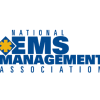By Scott Bourn
For the past 15 to 20 years, I’ve spent a lot of time thinking about clinical decision-making. When I was director of a university EMS degree program, I coached faculty and students on the importance of using clinical data to identify acuity and guide patient care and transport. Now, as a national leader of clinical practices at American Medical Response, I continue the discussion on a different scale, working with medical directors and local clinical leaders to develop clinical practices that meet the needs of their patients and communities. While the context of these conversations has been very different, the essence remains amazingly consistent.
1. Work with the data you have
Everyone complains about the lack of quality information with which to make clinical decisions. At the university, my students complained about their patients’ inaccurate or confusing presentations (or their patients’ tendencies to save their best information for the emergency department staff), inconsistent physical findings and inadequate time for repeat measurements. AMR’s leaders also perceive that they have too little prehospital data, of questionable quality, with inadequate hospital outcome information.
Welcome to the real world. Successful clinicians and clinical organizations understand that there will never be enough quality data to make decisions with 100 percent certainty. The key is to recognize the strengths and weaknesses of the data you do have and to consistently work toward improving its quality and availability—and, most important, to know which data are most important for making key clinical decisions.
2. Clearly identify what really matters
The irony of the “we don’t have enough data” claim is that we have always had too much data, and the problem is getting worse. My students failed to understand that their patients presented them with almost unlimited information: mental status, gait, skin color, verbal cues, physiologic data, chief complaint. The student’s dilemma is to identify which information is most useful for understanding and meeting that patient’s needs.
As clinical leaders we have the same challenge. How do we use the millions of data elements from patient care records, transport reports, satisfaction surveys, service complaints and, when available, hospital data? We have plenty of data. The problem is the lack of a meaningful strategy for using it to guide decisions that support improved patient care, outcome and experience.
What is AMR doing? Our clinical leaders and medical directors have collaborated to identify the things that make the most difference to the health and satisfaction of our patients and communities. We’ve scoured our clinical data, reviewed medical literature, and talked to our patients and community leaders. The result is what we’ve come to call the “Things that Matter:"
- Ensuring safe patient care and transport
- Cardiac arrest resuscitation
- Reduction of pain and discomfort
- Safe and effective maintenance of airway and ventilation
- Relief of respiratory distress
- Recognition and treatment of STEMI and stroke
- Effective and timely trauma care
Our quest was to identify clinical conditions with wide performance variations, clearly defined best practices and — most important — ones that had a tremendous impact on the patient’s experience. These are the things that matter.
3. Align “Things that Matter” with data collection and decision making
The “Things that Matter” are becoming the foundation for AMR’s local and national clinical decisions. Over the next 30 to 60 days, we will clarify and finalize several metrics for each Thing that Matters. For example, two metrics for safe and effective maintenance of airway and ventilation are:
- Use of an airway checklist that confirms safe placement and confirmation any time an advanced airway is used
- EtCO2 and SpO2 levels within normal limits throughout the patient care encounter
This approach offers distinct advantages for organizations that take the time to thoughtfully identify what matters to patients and communities: It can guide data collection and analysis.
Collecting data that measure important aspects of “Things that Matter” has many advantages. It can guide purchasing decisions by placing high priority on items that truly support “Things that Matter”, and it can drive quality improvement processes that move beyond the typical focus on skills performance or protocol compliance. Best of all, it can help leaders and practitioners collaborate to identify solutions for aspects of care that disappoint, such as protocol revision, focused training, a change in equipment or changes in delivery of care.
Organizations that successfully identify, measure and make decisions based on “Things that Matter” in their practices will reliably provide safer and more effective care that will be perceived as superior by patients and their communities.
About the author
Scott Bourn, Ph.D., is vice president of clinical affairs at AMR. He has more than 30 years of experience in EMS as a paramedic, emergency department and critical care nurse, EMS system coordinator and director of a university EMS degree program.


